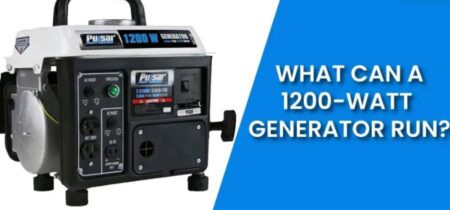
Yes, you can connect a generator to a dryer outlet, and it is a convenient solution for powering your home during a blackout. But let’s make things clear: while it’s possible, some significant risks are involved, especially something called “backfeeding.” This happens when electricity from your generator flows back into the power lines, and it’s dangerous for utility workers and can damage your generator and your appliances.
But don’t worry! If you know what you’re doing, you can avoid these problems. In this article, I’ll explain everything in simple terms so you can safely connect your generator to a dryer outlet. I want to ensure you stay safe and your electrical system stays in good shape.
Can a generator and a dryer outlet work together easily?
Yes, a generator and a dryer outlet can work together, but it’s crucial to understand how these outlets function. Home dryer outlets are unique compared to standard outlets found throughout your house.
Voltage
Dryer outlets need 240 volts. Most other outlets in your home provide only 120 volts. So, your generator must be able to make 240 volts to match what the dryer outlet expects.
Note: Using a generator with the wrong voltage can damage your appliances and the outlet. Always ensure they match.
Amperage
Dryer outlets have different strengths, but the common ones are 30 amps and 50 amps. Think of amps like the outlet’s power capacity. You need to know how many amps your dryer outlet can handle to see if your generator can safely provide that much power.
Note: If your generator provides too many amps, it can overload the outlet and cause a fire. There are too few amps, and it won’t power your dryer correctly.
Plug Type
Dryer outlets have specific plug shapes with three or four prongs. These prongs match the outlet’s voltage and amps. Your generator’s plug must match the prong shape of the dryer outlet.
Note: Ensure your generator’s plug matches the dryer outlet’s socket. Mismatched plugs won’t fit and are unsafe.
Circuit Protection
Dryer outlets are usually connected to circuits with safety devices, like circuit breakers or fuses. This is important to prevent electrical problems and stay safe.
Note: Too many appliances at a time can overload the generator or the outlet. It’s like trying to run too many gadgets on one extension cord; it can lead to problems.
So, before connecting your generator to a dryer outlet, ensure you understand the outlet’s electrical details, including voltage, amps, plug shape, and safety features. Also, check that your generator can meet these requirements. If they don’t match up, it can lead to electrical problems and even damage your generator or appliances. So, always be careful and informed.
How can you use a generator safely?
Electricity can be a powerful friend, but it can also be a dangerous foe. To make sure your generator use doesn’t lead to harm or damage, follow these safety precautions:
Proper Grounding
Proper grounding is like giving electricity a safe path to follow. Without it, electricity can go wild and cause damage or harm. When using a generator, make sure it’s grounded correctly to prevent electrical mishaps.
Overloading Circuits
Consider your electrical circuits as roads; too much traffic can lead to a jam. Similarly, overloading your generator or home circuits can cause problems. Be cautious to plug in only a few things at a time; it’s like having too many cars on a minor road.
Carbon Monoxide
Carbon monoxide is a silent danger; you can’t see or smell it. Using a generator indoors can produce this deadly gas. Always run generators in well-ventilated areas and never inside your home to avoid carbon monoxide poisoning.
Electrical Codes
Electrical codes are like safety rules for electricity. It’s crucial to follow these rules to avoid potential dangers. To ensure safety, make sure your generator setup aligns with the specific electrical codes applicable in your area.
Safety is the key to using generators without trouble. Ground them, don’t overload circuits, follow electrical codes, and beware of carbon monoxide. Stay safe and protect your home and loved ones from electrical mishaps.
Safe and Legal Alternatives to plugging a Generator into a Dryer Outlet
Power problems can be a significant inconvenience, but you can ensure a steady and uninterrupted electricity supply with the right solutions. Let’s explore some straightforward methods to tackle common power-related issues efficiently.
Using a transfer switch
A transfer switch is like a traffic cop for electricity. It helps you switch between regular power and a backup generator without causing accidents. Using a generator makes sure your home’s electricity doesn’t go back into the grid, which could be dangerous. But here’s the thing: it’s a job for the pros, so always call an electrician to install it safely.
Seeking professional electrician advice
Electricians are the superheroes to call when you’re puzzled by electrical stuff. They’re like the electric doctors. They look at your home, determine what you need, and ensure everything’s healthy. Safety is their superpower; they know all the rules to keep things legal and safe.
Adapting the generator or outlet
Sometimes, you need to make your generator and outlet best buddies. But be careful! They might not speak the same electrical language. Adapting means using the correct plugs and wires to connect them safely. But remember, doing it wrong can be risky and even against the law. If you need more clarification, ask an electrician for help.
Alternative power sources for appliances
When the lights go out, you want your fridge, heater, and other crucial appliances to keep running. Backup generators play the hero’s role in these situations, providing power when the regular supply goes down. Generators come in various sizes and types, similar to choosing the right tool for a job. Remember to give them regular TLC (tender loving care) through routine check-ups.
These solutions help you manage electricity safely and efficiently. Safety and following the rules are essential no matter what you choose.
How to plug a generator into dryer outlet?
Plugging a generator into a dryer outlet can provide power during outages or emergencies. However, it’s essential to do this safely to prevent electrical hazards. Here’s a guide on how to plug a generator into a dryer outlet:
Note: Before attempting this connection, ensure you know and comply with all local electrical codes and safety regulations. If you need more confidence in your abilities, it’s best to consult a licensed electrician.
Materials You’ll Need
- Generator: Ensure your generator is in good working condition and has the necessary power output.
- Generator Cord: You’ll need a generator extension cord with the appropriate plug for your generator and a compatible dryer outlet on the other end.
- Transfer Switch (Optional): Consider installing a transfer switch for added safety. It’s a device that isolates your home’s electrical system from the grid, preventing backfeeding.
Now, let’s start with Step-by-Step Instructions:
Safety First
Safety is paramount. Ensure your home’s generator and main circuit breaker are turned off. Also, wear appropriate safety gear like gloves and safety glasses.
Choose the Right Spot
Place your generator outside in a well-ventilated area. Please keep it away from doors, windows, and vents to prevent carbon monoxide buildup. Ensure it’s on a stable, flat surface.
Turn Off the Main Breaker
Locate your home’s main electrical panel or circuit breaker box and switch off the main circuit breaker. This disconnects your home from the grid, preventing backfeeding and safeguarding utility workers.
Get the Right Cord
Make sure you have the right generator extension cord. It should have the correct plug for your generator on one end and fit your dryer outlet on the other.
Plug into the Generator
Connect one end of the generator cord securely to your generator’s outlet.
Connect to Dryer Outlet
Insert the other end of the generator cord into your home’s 240-volt dryer outlet. Ensure it’s firmly plugged in.
Start the Generator
Follow your generator’s manual to start it up. Let it stabilize and reach the required RPM (revolutions per minute) before connecting any appliances.
Control Individual Circuits (Optional)
If a transfer switch is installed, you can choose which circuits get power from the generator. Turn on the circuit breakers for the specific appliances or areas you want to power. Remember not to overload the generator.
Keep an Eye Out
Regularly check your generator’s fuel level, oil, and warning lights while running. Don’t leave it unattended.
Turn Off and Disconnect
When utility power is restored or when you no longer need the generator, follow these steps:
- Turn off the generator.
- Unplug the generator cord from the dryer outlet.
- Turn on the main circuit breaker to restore utility power.
Safety Tips: Avoid overloading the generator by prioritizing essential appliances. Always use the proper extension cords and plugs, and keep the generator away from flammable materials. Follow the manufacturer’s maintenance instructions for your generator. Safety should be your top concern throughout the process.
How to maintain a generator for reliable use during power outages?
Proper generator maintenance is crucial to ensure it functions reliably during power outages. Here’s how to maintain your generator:
- Regularly check your generator for problems like broken parts or leaks.
- Change the oil on schedule, like you do for your car, to keep the engine running well.
- Keep the air filter clean or replace it so the generator can breathe properly.
- Use fresh fuel and additives to prevent the fuel from going bad.
- Check the battery (if there is one) and keep the battery clean.
- Check the liquid level for generators with liquid cooling and change it as needed.
- Look at the spark plug sometimes and change it if it looks terrible.
- Test the generator by plugging something into it to make sure it works.
- Start the generator for a short time each month to keep it in good shape.
- Learn how to fix common problems or ask for help if you need more clarification.
Conclusion
Connecting a generator to a dryer outlet can be a valuable solution for power outages, but safety should always be the top priority. Proper grounding, avoiding overloads, and understanding the electrical specifications are main steps.
As Albert Einstein once said, “Imagination is more important than knowledge,” in the realm of electrical safety, a combination of imagination and knowledge can help ensure a reliable and secure backup power source during emergencies.








